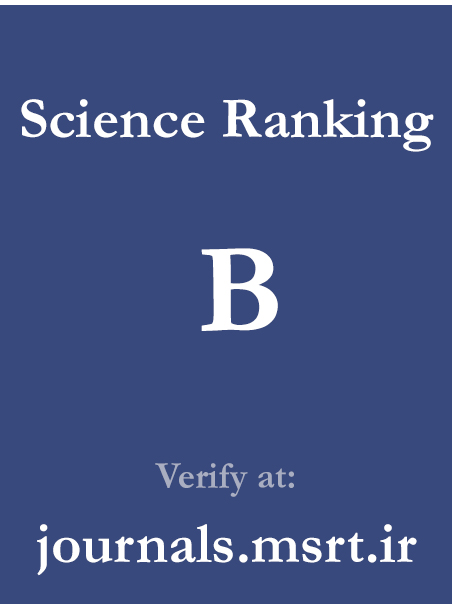Diagnostic Validity Assessment of the Fifth Extended Edition of the Wechsler Intelligence Scale for Children in Students with Attention Deficit/Hyperactivity Disorder Using the Sensitivity Coefficient Method
Keywords:
WISC-V Extended, ADHD, diagnostic validity, sensitivity coefficient, cognitive assessmentAbstract
Purpose: This study aimed to evaluate the diagnostic validity of the fifth extended version of the Wechsler Intelligence Scale for Children (WISC-V Extended) in differentiating students with Attention Deficit/Hyperactivity Disorder (ADHD) from typically developing peers using the sensitivity coefficient method.
Methods and Materials: The research employed a psychometric design focusing on diagnostic validity. A total of 240 elementary school students in Tehran participated, including 120 diagnosed with ADHD (based on clinical files and educational referrals) and 120 normative students selected through simple random sampling. The WISC-V Extended, which includes five major indices—Verbal Comprehension, Visual-Spatial, Fluid Reasoning, Working Memory, and Processing Speed—was administered individually. Data analysis was conducted using the sensitivity coefficient method, comparing empirical and critical difference values across groups to determine each subtest’s ability to discriminate between ADHD and non-ADHD students.
Findings: The results showed that the Verbal Comprehension subtests did not exceed critical thresholds and therefore lacked diagnostic validity. In contrast, subtests within the Visual-Spatial domain (e.g., Block Design, Visual Weights), Fluid Reasoning domain (Calculation A and B), Working Memory domain (Spatial Span Forward and Backward, Sentence Recall), and Processing Speed domain (Coding Recall, Coding Copy, Symbol Deletion) demonstrated empirical differences greater than critical values, indicating strong diagnostic sensitivity. Among these, Symbol Deletion exhibited the highest sensitivity, suggesting its specific utility in ADHD screening.
Conclusion: The WISC-V Extended demonstrates partial diagnostic validity in the assessment of ADHD. While verbal subtests are more reflective of general cognitive ability, non-verbal and executive-function-oriented subtests offer stronger diagnostic differentiation. These findings underscore the importance of selective subtest interpretation for accurate ADHD identification and support the use of WISC-V Extended in clinical assessment settings.
Downloads
References
Bodaghi, M., Kamkari, K., & Saedi, S. (2023). Investigating the sensitivity coefficient of the fifth version of the Wechsler children's intelligence scale in students with attention deficit disorder. Journal of Assessment and Research in Applied Counseling (JARAC), 5(4), 9-15. https://doi.org/10.61838/kman.jarac.5.4.2
Canivez, G. L., Watkins, M. W., & Dombrowski, S. C. (2016). Factor structure of the Wechsler Intelligence Scale for Children-Fifth Edition: Exploratory factor analyses with the 16 primary and secondary subtests. Psychological assessment, 28(8), 975-986. https://doi.org/10.1037/pas0000238
Canivez, G. L., Watkins, M. W., & McGill, R. J. (2019). Construct validity of the Wechsler Intelligence Scale For Children – Fifth UK Edition: Exploratory and confirmatory factor analyses of the 16 primary and secondary subtests. British Journal of Educational Psychology, 89(2), 195-224. https://doi.org/10.1111/bjep.12230
Dombrowski, S. C., Canivez, G. L., & Watkins, M. W. (2018). Factor Structure of the 10 WISC-V Primary Subtests Across Four Standardization Age Groups. Contemporary School Psychology, 22(1), 90-104. https://doi.org/10.1007/s40688-017-0125-2
Dombrowski, S. C., Canivez, G. L., Watkins, M. W., & Alexander Beaujean, A. (2015). Exploratory bifactor analysis of the Wechsler Intelligence Scale for Children—Fifth Edition with the 16 primary and secondary subtests. intelligence, 53, 194-201. https://doi.org/10.1016/j.intell.2015.10.009
Goo, M.-J., Oh, S.-W., Lee, S.-Y., Paik, Y. S., Lee, J.-H., & Hwang, K.-S. (2016). Cognitive Characteristics of Attention-Deficit Hyperactivity Disorder in Korean Wechsler Intelligence Scale for Children-Fourth Edition: Focused on General Ability Index and Cognitive Proficiency Index. Journal of Korean Academy of Child and Adolescent Psychiatry, 27(4), 313-318. https://doi.org/10.5765/jkacap.2016.27.4.313
Jang, M. J., Chung, S. K., Yang, J.-C., Park, J. I., Kwon, J.-H., & Park, T. W. (2023). Association of the Comprehensive Attention Test and the Korean Wechsler Intelligence Scale for Children-Fourth Edition in Children and Adolescents With Attention-Deficit/Hyperactivity Disorder. Journal of Korean Academy of Child and Adolescent Psychiatry, 34(3), 181-187. https://doi.org/10.5765/jkacap.230025
Kamkari, K., Nasroalhi, B., SharifiDaramadi, P., & Memarpoor, M. (2021). Diagnostic Validity of the Fifth Edition of Wechsler Intelligence Scales for children in Children with Intellectual Disability in Islamshahr [Research]. Journal of Exceptional Children, 21(3), 55-66. http://joec.ir/article-1-1467-en.html
Panah, N. M. R., Kamkari, K., & Baghdasarians, A. (2025). Diagnostic Validity of the Fifth Edition of Wechsler Intelligence Scale for Children (WISC-V) in Students With ADHD. Iranian journal of psychiatry and behavioral sciences, 19(1). https://doi.org/10.5812/ijpbs-153741
Downloads
Published
Submitted
Revised
Accepted
Issue
Section
License
Copyright (c) 2025 Shaghayegh Tavakoli (Author); Parviz Sharifi Daramadi (Corresponding author); Enayatollah Zamanpour (Author)

This work is licensed under a Creative Commons Attribution-NonCommercial 4.0 International License.

